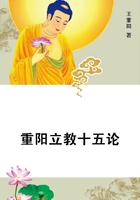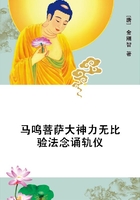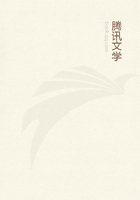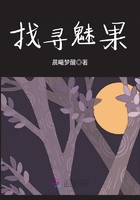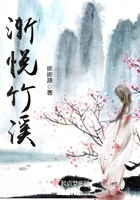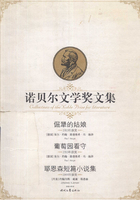"We will now consider how the attraction of aliment and the process of nutrition takes place in plants; for in animals we see the aliment brought through the veins to the heart, as to a laboratory of innate heat, and, after receiving there its final perfection, distributed through the arteries to the body at large, by the agency of the spirits produced from this same aliment in the heart."[30] There is nothing in this but Galen's view, and Cesalpinus believed, as did all his contemporaries, that the blood was distributed through the body by the vena cava and its branches for the nourishment of all its parts.[*] To those who have any doubts as to Harvey's position in this matter I would recommend the reading of the "De Motu Cordis" itself, then the various passages relating to the circulation from Aristotle to Vesalius. Many of these can be found in the admirable works of Dalton, Flourens, Richet and Curtis.[31] In my Harveian Oration for 1906[32] I have dealt specially with the reception of the new views, and have shown how long it was before the reverence for Galen allowed of their acceptance. The University of Paris opposed the circulation of the blood for more than half a century after the appearance of the "De Motu Cordis."
[30] De Plantis, Lib I, cap. 2.
[*] Cesalpinus has also a definite statement of the circlewise process.--Ed.
[31] J. C. Dalton Doctrines of the Circulation, Philadelphia, 1884; Flourens Histoire de la decouverte de la circulation du sang, 2d ed., Paris, 1857; Charles Richet Harvey, la circulation du sang, Paris, 1879; John G. Curtis Harvey's views on the use of Circulation, etc., New York, 1916.
[32] Osler An Alabama Student and Other Biographical Essays, Oxford, 1908, p. 295.
To summarize--until the seventeenth century there were believed to be two closed systems in the circulation, (1) the natural, containing venous blood, had its origin in the liver from which, as from a fountain, the blood continually ebbed and flowed for the nourishment of the body; (2) the vital, containing another blood and the spirits, ebbed and flowed from the heart, distributing heat and life to all parts. Like a bellows the lungs fanned and cooled this vital blood. Here and there we find glimmering conceptions of a communication between these systems, but practically all teachers believed that the only one of importance was through small pores in the wall separating the two sides of the heart. Observation--merely looking at and thinking about things--had done all that was possible, and further progress had to await the introduction of a new method, viz., experiment. Galen, it is true, had used this means to show that the arteries of the body contained blood and not air. The day had come when men were no longer content with accurate description and with finely spun theories and dreams. It was reserved for the immortal Harvey to put into practice the experimental method by which he demonstrated conclusively that the blood moved in a circle. The "De Motu Cordis" marks the final break of the modern spirit with the old traditions. It took long for men to realize the value of this "inventum mirabile" used so effectively by the Alexandrians--by Galen--indeed, its full value has only been appreciated within the past century. Let me quote a paragraph from my Harveian Oration.[33] "To the age of the hearer, in which men had heard and heard only, had succeeded the age of the eye in which men had seen and had been content only to see. But at last came the age of the hand-- the thinking, devising, planning hand, the hand as an instrument of the mind, now re-introduced into the world in a modest little monograph from which we may date the beginning of experimental medicine."
[33] Osler: An Alabama Student, etc., pp. 329-330.
Harvey caught the experimental spirit in Italy, with brain, eye and hand as his only aids, but now an era opened in which medicine was to derive an enormous impetus from the discovery of instruments of precision. "The new period in the development of the natural sciences, which reached its height in the work of such men as Galileo, Gilbert and Kepler, is chiefly characterized by the invention of very important instruments for aiding and intensifying the perceptions of the senses, by means of which was gained a much deeper insight into the phenomena than had hitherto been possible. Such instruments as the earlier ages possessed were little more than primitive hand-made tools. Now we find a considerable number of scientifically made instruments deliberately planned for purposes of special research, and as it were, on the threshold of the period stand two of the most important, the compound microscope and the telescope. The former was invented about 1590 and the latter about 1608."[34] It was a fellow professor of the great genius Galileo who attempted to put into practice the experimental science of his friend. With Sanctorius began the studies of temperature, respiration and the physics of the circulation. The memory of this great investigator has not been helped by the English edition of his "De Statica Medicina," not his best work, with a frontispiece showing the author in his dietetic balance. Full justice has been done to him by Dr. Weir Mitchell in an address as president of the Congress of Physicians and Surgeons, 1891.[35] Sanctorius worked with a pulsilogue devised for him by Galileo, with which he made observations on the pulse. He is said to have been the first to put in use the clinical thermometer. His experiments on insensible perspiration mark him as one of the first modern physiologists.
[34] Dannemann: Die Naturwissenschaften in ihrer Entwickelung..., Vol. II, p. 7, Leipzig, 1911.
[35] See Transactions Congress Physicians and Surgeons, 1891, New Haven, 1892, II, 159-181.


